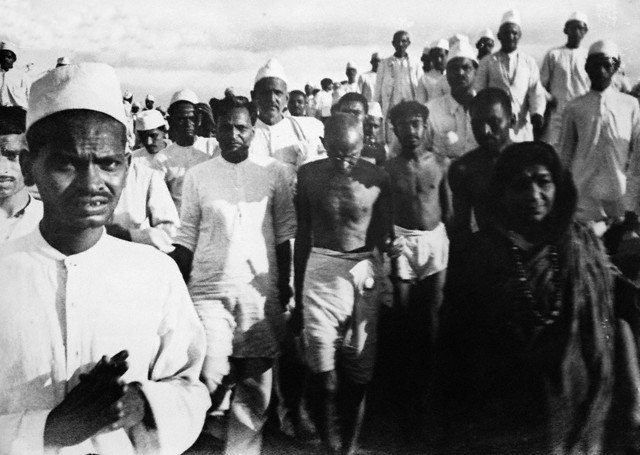Direct action is a term for economic and political behavior in which participants use agency—for example economic or physical power—to achieve their goals. The aim of direct action is to either obstruct a certain practice or to solve perceived problems.
Depiction of the Belgian general strike of 1893. A general strike is an example of confrontational direct action.
Anarchists Against the Wall destroying fences at the Gaza–Israel barrier in 2007
Removing ballast from a train track to protest transport of nuclear waste by rail
Gandhi, Salt March 1930
Nonviolence is the personal practice of not causing harm to others under any condition. It may come from the belief that hurting people, animals and/or the environment is unnecessary to achieve an outcome and it may refer to a general philosophy of abstention from violence. It may be based on moral, religious or spiritual principles, or the reasons for it may be strategic or pragmatic. Failure to distinguish between the two types of nonviolent approaches can lead to distortion in the concept's meaning and effectiveness, which can subsequently result in confusion among the audience. Although both principled and pragmatic nonviolent approaches preach for nonviolence, they may have distinct motives, goals, philosophies, and techniques. However, rather than debating the best practice between the two approaches, both can indicate alternative paths for those who do not want to use violence.

Mahatma Gandhi, often considered a founder of the modern nonviolence movement, spread the concept of ahimsa through his movements and writings, which then inspired other nonviolent activists.
Petra Kelly founded the German Green Party on nonviolence
Gandhi famously advocated for the Indian independence movement to strictly adhere to the principles of nonviolence.
The Semai have principle called punan, which includes nonviolence








